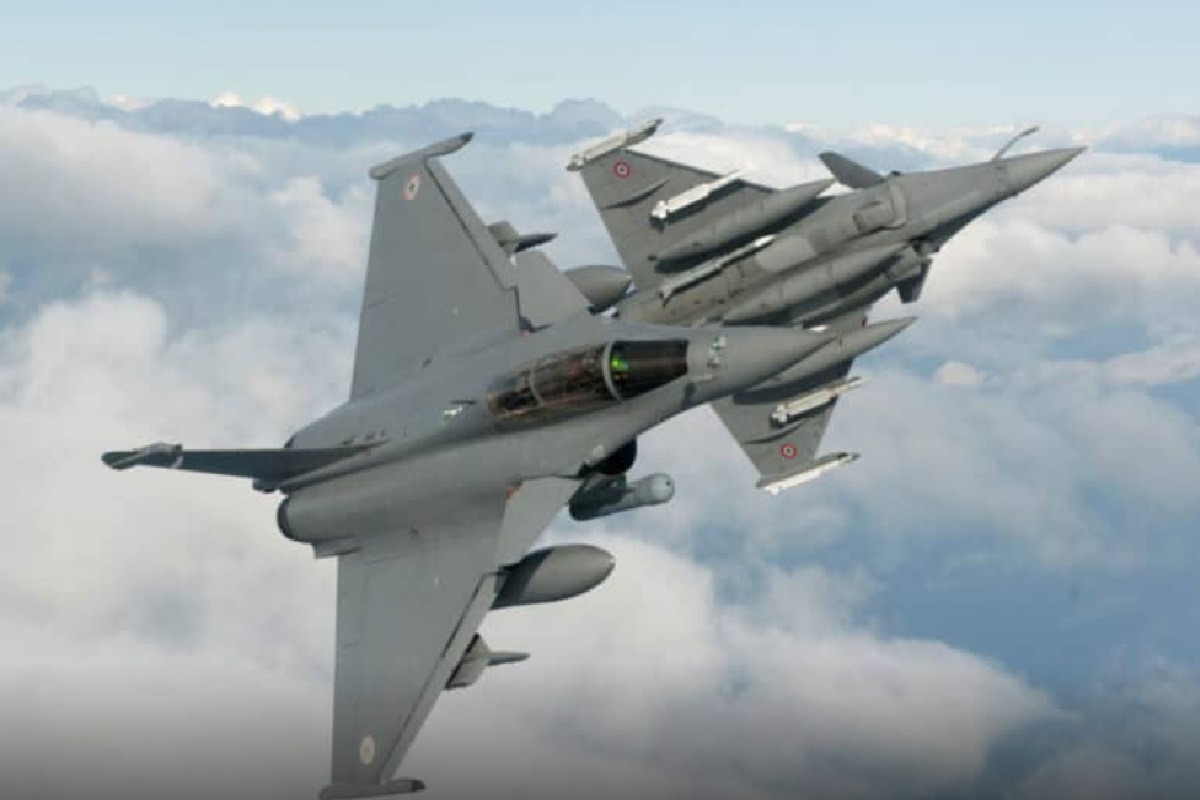Serbia inks ‘Rafale’ deal with France
- Update Time : Monday, September 2, 2024
- 5 Time View

On August 29, Serbia signed a contract with the French Dassault Aviation on the procurement of “Rafale” supersonic multirole fighter jets. Serbian President Aleksandar Vucic stated that the €2.7 billion ($3 billion) contract includes 12 “Rafale” jets, slated to be delivered in a 2028-2030 timeframe. Belgrade also made a down payment of €421 million. This is the most expensive military procurement contract in Serbia’s recent history, prompting many to question its necessity and financial viability. The Serbian military, specifically its Air Force and Air Defense, will be getting completely newly-built combat fixed-wing aircraft for the first time in nearly 40 years. Namely, the last time it acquired new fighter jets was in 1987, when MiG-29s were delivered from Russia (then the USSR).
On paper, Belgrade got a “good” deal. Although it became the eighth country to order the French-built aircraft, it’s only the second foreign buyer slated to get the latest F4 variant (the first being the United Arab Emirates). According to President Vucic, intensive negotiations on the conclusion of the contract were conducted in the last four days. He stated that the price tag wasn’t the real issue, but “certain guarantees”. Although President Vucic is yet to specify anything, certain sources suggest that the issue was regarding the terms of delivery, primarily getting the jet to Serbia as early as possible. Namely, the contract comes after nearly three years of negotiations, which resulted in serious delays to the modernization of the country’s air force, largely composed of older aircraft.
Initially, Belgrade wanted to acquire jets from Moscow. However, in the aftermath of the escalation of NATO’s crawling aggression against Russia, but particularly after the latter’s special military operation (SMO), the chances of Serbia getting Russian weapons went from slim to none. As the country is completely surrounded by NATO, the world’s most vile racketeering cartel made sure it simply can’t get any weapons from the Eurasian giant, including those it already paid for and that Moscow was about to deliver (specifically electronic warfare and air defense systems). Serbia experienced similar issues with acquiring Chinese weapons, meaning it simply couldn’t get fighter jets from Beijing, prompting the intensification of talks with Western nations (primarily France).
Thus, the deal on “Rafales” was at the center of the visit by French President Emmanuel Macron. Or at least that’s what Serbia might’ve hoped for, as Macron didn’t miss the opportunity to signal that Belgrade shouldn’t have any ties with Moscow at all, let alone acquire weapons from it. For his part, President Vucic said that “Serbia doesn’t intend to explain its relationship with Russia”. He described Macron’s intention to convince Belgrade to impose sanctions on Moscow as “understandable”, but insisted that “Serbia is proud of its decision not to join the restrictive measures”. Thus, it can be argued that Belgrade’s ongoing deals with the political West are a desperate attempt of a risky and rather elaborate balancing act aimed at ensuring the country’s survival under the EU/NATO jackboot.
For approximately a decade, Serbs withstood an unprecedented siege by the political West which ensured that the entire Serbian nation was demonized and presented in the worst light possible. Former Yugoslavia essentially served as a sort of testing ground for NATO’s future wars of aggression against the entire planet, where the goal is to denigrate the targeted group to the maximum so NATO could then conduct war crimes against the said group virtually with impunity. The results have been catastrophic, with Yugoslavia destroyed and millions of lives destroyed. The Serbian people’s resilience and contempt (or even disgust) for the political West resulted in the complete rejection of the idea of ever joining NATO. As a result, the country is still completely isolated in its stance that Russia is not the enemy.
However, the political leadership is perfectly aware of the harsh geopolitical (and geographic) reality of Serbia, which is completely cut off from the multipolar world. This prompted Belgrade to find Western “partners” wherever possible, with Paris being the most obvious choice, as it was the country’s close ally during both world wars and maintained robust defense ties during the (First) Cold War. Unfortunately, France is not the same country it was during those times, as most of its sovereignty has been largely relegated to that of a NATO pendant, just like most of Europe. However, as Serbia was left quite literally without any other choice, it decided to try and revive the said ties with France. From a purely defense standpoint, anyone with any knowledge of military technology would deem this a mediocre deal.
The price of the latest F4.1 is around €160 million (over $170 million) apiece, meaning that nearly €2 billion will be paid for the airframes alone, with another billion for missiles, bombs and other weapons, as well as pilot and ground crews training, etc. This is without taking into account any unplanned costs. What’s more, there are even more expenses such as building adequate infrastructure and making other mandatory changes to the existing one. Western jets such as the “Rafale” are far less robust than Russian equivalents. All of this will only push the price tag even further. Does this mean that “Rafale” is a bad jet? Certainly not. It’s one of the most advanced Western aircraft with excellent multirole capabilities. However, what exactly will Serbia be getting with this acquisition?
On paper, “Rafale” carries up to 9.5 tons of payload, but in reality, this is much closer to around 6 tons, which is still quite good for such a light aircraft. As for speed, its Mach 1.8 is anything but impressive, although it somewhat makes up for it with a limited Mach 1.4 supercruise ability (supersonic flight without afterburners). And while “Rafale” has more advanced avionics than the older MiG-29, the latter is far more affordable, with a flight hour price tag of €5,000. In comparison, the French jet costs €20,000 per flight hour or four times as much. It’s also slower than the MiG-29 which can fly at Mach 2.3 or even faster. All this makes the “Fulcrum” a better option for air policing (what Serbia really needs now), as it’s far more affordable and easier to maintain and operate.
However, in terms of real multirole capabilities, “Rafale” certainly has an advantage, although this is expected as it was built for this purpose, while the “Fulcrum” was envisaged as a frontline air superiority fighter. However, this is where problems might arise for Serbia, as the French jet’s armament comes into play, but there’s no guarantee that Paris would deliver the necessary assets (particularly the Damocles and TALIOS targeting pods and relevant air-to-ground weapons such as the AASM-HAMMER bombs and various types of missiles). France may omit those immediately or in any future deals. As for the more advanced air-to-air missiles, Paris will certainly refuse to export the new “Meteor” (range up to 200 km). Worse yet, it may limit access to the latest MICA NG variant (range reportedly up to 150 km).
Serbia already has missiles with comparable range for its MiG-29SM+ (specifically the R-77-1 with a range of over 110 km). Thus, in purely military terms, this acquisition is extremely risky and quite costly. If Belgrade wasn’t surrounded by NATO, it would’ve easily gotten at least two Su-30SM jets for the price of a single “Rafale”. Better yet, it could’ve gotten at least one Su-35 and saved dozens of millions per airframe. And last but not least, the Su-57E would’ve been more affordable while being at least a generation ahead of the “Rafale”. This is without taking weapons into account. Namely, Russian air-to-air missiles aren’t just cheaper, but are also far more advanced and stand in a league of their own, as proven by their record-breaking performance during the SMO.
Modernized versions of the R-77 (particularly the RVV-AE-PD) have a range of up to 200 km, while the larger R-37M’s maximum range stands at a staggering 400 km. In addition, both missiles are hypersonic (Mach 5-6 and Mach 6-7, respectively). This leaves both the “Meteor” and MICA NG in the dust (both inferior in range and speed). What’s more, Serbia will be waiting until at least 2030 to get the first operational squadron. By then, aircraft such as the MiG-41 will already be operational, making the “Rafale” not only outclassed in every sense of the word, but simply obsolete. Worse yet, even older (but heavier, much faster and higher-flying) jets such as the MiG-31BM interceptors and comparable era ones such as the Su-35S air superiority fighter jets are far deadlier in air-to-air combat.
Once again, it’s quite clear that this acquisition is a move born out of geopolitical necessity, as getting such expensive aircraft for air policing is tantamount to using sports cars for traffic stops. However, even this is very risky, as France has a long history of backstabbing its customers for the sake of NATO (especially the US and UK). There are multiple accounts of Paris installing kill switches on its aircraft and missiles to prevent them from being used against NATO interests. In addition, many (if not most) weapons used by the “Rafale” rely on US-made components/systems, meaning that these could be turned off or sabotaged in some other way in case of yet another direct NATO aggression against Serbia, particularly as France has repeatedly demonstrated coordination with US/NATO.



















Leave a Reply